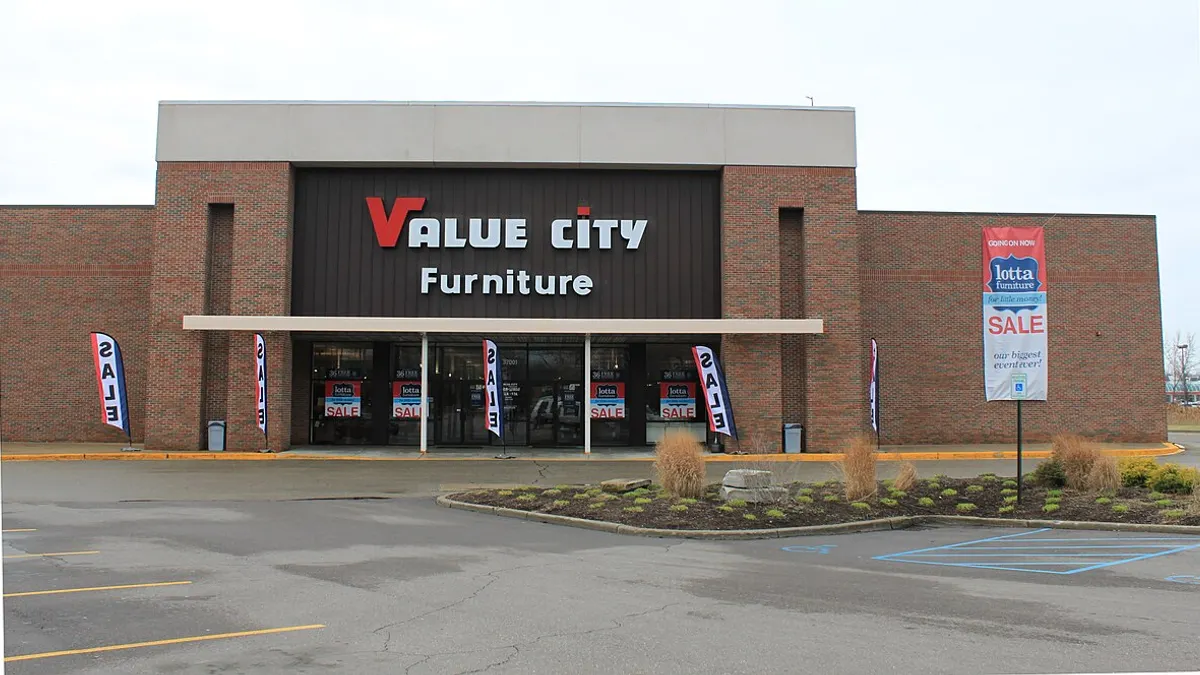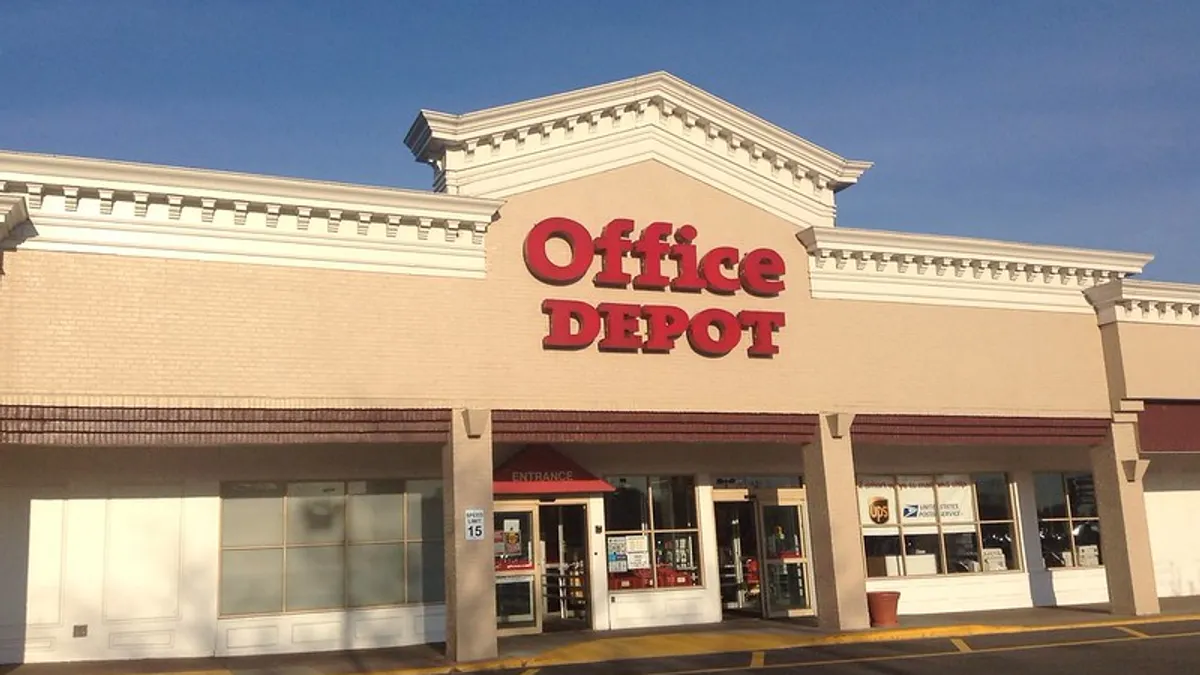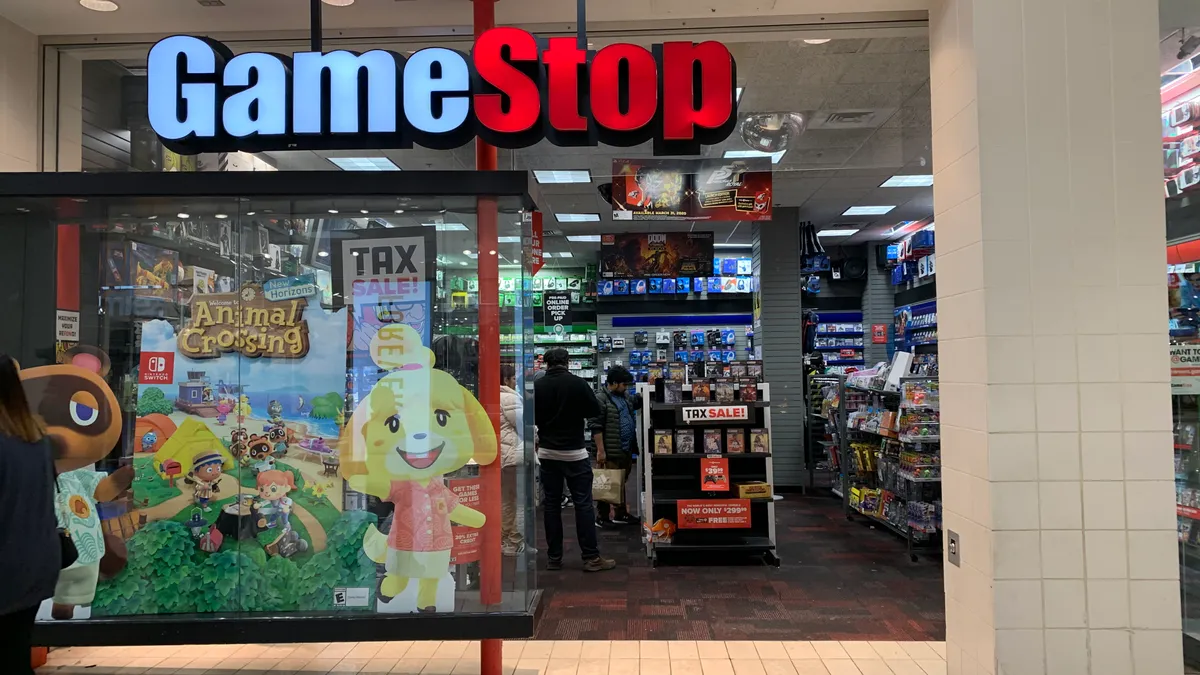Few people outside the remaining executive ranks of Sears Holdings are projecting optimism about the company these days.
The retailer once was not just a household name — it literally put its name on houses. It pioneered direct-to-home and department store retail and sold everything from clothes and washing machines to cars and houses. But in 2017, customers see understaffed and poorly maintained stores, while analysts and other observers see a company undergoing a slow motion liquidation outside of bankruptcy.
That process has continued in recent weeks. In the past month, Sears announced more store closures, more layoffs and more executive departures. It has also sued two of its suppliers. This all comes on top of the retailer acknowledging in March that it might not survive as a going concern. Much of the retailer's prized assets have been stripped away and sold off, including the sale of the lion's share of the company's owned real estate to a venture called Seritage Growth Properties, which is chaired and partly owned by Sears' CEO. Sears also shocked the retail world earlier this year when it sold the popular Craftsman tool brand to Black and Decker for about $900 million.
To be sure, Sears has had some small wins lately, too. In May, the retailer announced it managed to wring out its first quarterly profit in two years. The news came just days after Sears said it had inked agreements to reduce its outstanding debt and pension obligations for fiscal 2017.
Yet even as Sears tries to take stress off its balance sheet, there are few signs it can successfully adapt to a retail environment undergoing rapid changes and widespread challenges. With each store closure, asset sale and layoff, Sears is reducing its imprint on a world with little shortage of retail options — from rival department stores and off-price merchants to general merchandisers and e-commerce retailers.
Eddie Lampert, the hedge fund mogul who became CEO in 2013 after merging Sears and Kmart in the early 2000s, and his ESL Investments fund have provided emergency financing to Sears and hacked away at the retailer's cost structure. Yet even with these moves, the company still faces long-term liquidity challenges that show no signs of abating. To put it bluntly: It’s getting harder and harder to see how this could possibly end well.
If there is a soft landing for Sears, it will require a reduced store and staff footprint and a company that's more focused on select categories and a more niche demographic. Sears' days of selling everything to everybody everywhere are over.
A Sears spokesperson declined to comment on this story, only saying that Sears does not "comment on speculation about the company."
Death by 1000 cuts
So far for the year, Sears plans to close 270 stores — well more than twice what fellow department store retailer Macy’s said it would close in its own downsizing moves. Sears’ closures grew in June when plans for more than 60 additional store closings, including 49 Kmart stores, became public. An announcement of 20 additional store closures soon followed. All told, Sears has cut its store footprint nearly in half since 2012 — from 2,019 stores to fewer than 1,200 once all planned closures are completed this year.
The company has also shed more than 500 corporate jobs thus far in 2017 in an effort to further reduce costs. Greg Portell, lead partner in consulting firm A.T. Kearney’s retail practice, said Sears’ most recent staff cuts are not worrisome as long as they are part of an orchestrated strategy — or, in his words, “a known path” — rather than a reaction to an unexpected event.
Departing with the most recent wave of laid-off workers will be three key executives: Stephan Zoll, president of online; David Pastrana, president of apparel; and Eric Jaffe, senior vice president of Shop Your Way. The context of those executive departures is not exactly clear. A Sears spokesperson said the roles and responsibilities would be filled through a mix of job consolidation and internal hires, though the company is still “working through that.”
"[W]hat is it about Sears’ performance over the last 12 years that suggests there’s anything to talk about in terms of a future?”

Mark Cohen
Director of Retail Studies, Columbia Business School
The departure of those three executives is notable for what they oversaw. Apparel represents about a quarter of Sears total merchandise sales, while online sales and the loyalty program Shop Your Way are key aspects of Sears’ current strategy as a retailer. The loyalty program, which was headed by Jaffe, who had been an ESL analyst before joining Sears, has been a key piece of the company’s turnaround efforts. In a February press release, the company said it planned to make investments in further developing Shop Your Way, which has regularly added partnerships and capabilities in recent years.
“It’s kind of odd the people who are leading your strategy are part of the group that’s out,” Mark Cohen, a former Sears executive and Columbia University retail studies professor, told Retail Dive in an interview. “But what is it about Sears’ performance over the last 12 years that suggests there’s anything to talk about in terms of a future?”
'There really isn't a way forward'
“It’s been a long, slow trainwreck at Sears,” Ken Perkins, president of retail research firm Retail Metrics, told Retail Dive.
On the one hand, asset sales, corporate cost cuts and cash infusions from Lampert and his hedge fund have all helped stave off bankruptcy, according to Perkins. But “the cupboard is becoming increasingly bare” in terms of assets left for Sears to sell off.
More importantly, Sears is struggling to give shoppers a reason to walk through its doors. According to data from Perkins’ firm, Sears’ sales growth has lagged behind that of the struggling department store sector as a whole during nearly every quarter since 2008. During that same time, Sears has experienced just one quarter of positive sales growth — all the way back in 2010.
“Given how competitive the entire retail landscape is, where you have a company like Macy’s, which is much better positioned just in terms of national brand, product offerings, cleanliness of stores, investments in IT and ecommerce efforts — all things Sears hasn’t done — and even they are having a tough go of it and shuttering 100 stores. There’s really just no light at the end of the tunnel [for Sears]. It’s only a matter of time before the lights go out,” Perkins said. “There really isn’t a way forward. … I don’t see how it can possibly survive long-term.”
Supplier squeeze
The company’s recent public spats with suppliers could hint at even deeper troubles than what we see on the surface.
In May, Lampert took to the company’s blog to complain that toolmaker One World, which manufacturers some of the company’s Craftsman tools, was attempting to renege on its contract and threatening to sue Sears in court. "We will not simply roll over and be taken advantage of — we will do what’s right to protect the interests of our company and the millions of stakeholders we serve," Lampert said.
At the time Lampert defended Sears’ track record of paying all its vendor bills and, as he has in the past, said that rumors to the contrary only give vendors leverage to negotiate more favorable terms. He noted that Sears will “take the appropriate legal action to protect our rights and ensure that One World honors their contract.” Sears went on to sue One World and then quietly announce later that it had resolved the matter. In June, the retailer sued a second Craftsman supplier, Ideal Industries.
The vendor disputes have been unusually open and could hint at more widespread issues in Sears’ supply chain. “We definitely haven’t seen a retailer’s relationship play out as publicly as this has been,” David Silverman, senior director for retail coverage at Fitch Ratings, told Retail Dive in an interview. “There could be other issues elsewhere and this one for whatever reason has been made public.”
"Weakening vendor relations are definitely a step toward a restructuring process."

David Silverman
Senior Director for Retail, Fitch Ratings
Very often, a retailer’s relationships with its suppliers play out backstage, even if those relationships are deteriorating. For instance, children’s apparel retailer Gymboree, which filed for bankruptcy in early June, ran up against a supply chain full of vendors pushing for stricter terms on shipments earlier this year, including demands for upfront payments. In a filing, a representative for Gymboree said these issues began after news of an executive departure at Gymboree broke amid speculation of financial stress. None of this was made public until Gymboree filed for bankruptcy protection.
For retailers with balance sheet issues, a rash of skittish suppliers demanding better terms and earlier payments can create a vicious cycle that only hastens bankruptcy. “Weakening vendor relations are definitely a step toward a restructuring process,” Silverman said. “Tighter terms from vendors with regard to payment, and frustrations with regard to store closures and negative comp sales, would cause the vendors’ sales and profits to be impacted. Strained quantitative and qualitative relations, if you will, between retailers and vendors are a step along the path [toward bankruptcy].”
To make matters worse, supply issues could hurt Sears in the short term, too. After Sears issued its "going concern" announcement in March, reports surfaced that Sears' suppliers were scaling back shipments and asking for better payment terms.
Perkins said that Sears’ Kmart vendors have scaled back on product shipments over time as Sears has under-invested in the discount retail chain. “Especially on [the] Kmart side of things, some stores are really operating on bare bones inventory,” he said.
Better off out of bankruptcy
So, you might be asking yourself, what’s ahead for Sears?
For starters, bankruptcy is still a very real possibility. Fitch’s Silverman said his firm still sees risk that Sears could default in the next year or two despite several restructuring moves this year. “The company continues to need $2 billion in liquidity every year to fund EBIDTA losses, basic maintenance, capex, pension payments, debt payments and other fixed obligations,” he said. “While some of the moves they have made this year should be able to help the company operate in 2017, in our analysis, they have not changed the company’s long-term picture.”
Sears is running out of room to cut costs and lower its expenses to boot. The company’s $150 million in capital expenditures amounts to “literally changing light bulbs and putting paint on stores where the paint is peeling,” Silverman said.
While Sears is essentially liquidating the company at a pace that rivals some bankrupt retailers, things could still get worse for the company, its employees and customers in a potential bankruptcy. Silverman noted bankruptcy can impose onerous limitations on retailers. It can also allow for a quickened pace of store closures that would cut even more store jobs and at a faster rate. Vendors would likely become even more reluctant to sell to Sears. Customers could lose some ability to return merchandise and have products under warranty fixed.
“All counterparties of the business are in better stead outside of bankruptcy,” Silverman said, although some have pointed out that Lampert and his hedge fund — being creditors to Sears — could fare better than other stakeholders in bankruptcy.
Any path back to profitability?
Further out, it’s difficult to see what the future holds for Sears.
“It’s hard to see how it possibly turns around,” Perkins said. “I think the only possibility would be maybe you hand-select the top-performing stores and they become a core you build on or maybe just keep alive, and that would be a very small core, maybe 100-150 stores.”
For even a diminished Sears to survive, the company would have to make changes and investments companywide, he added. Less apparel, for one, and more jewelry, home, auto and other hard line goods. Better associate training, better in-store technology, better relationships with vendors. “It would be almost a complete overhaul,” Perkins said.
"A profitable $15 billion retailer — that would be the pride of the industry."

Greg Portell
Partner, A.T. Kearney
A.T. Kearney's Portell thinks Sears’ shrinking sales today look worse in the context of its former stature and that the retailer could still secure a place in the world for itself if it executes a downsizing strategy carefully. “Management needs to say, ‘30 years from now, what is the revenue figure that stops the decline? What are the talent and economics we need to make that goal work?’” Getting that smaller revenue figure right is crucial, he said, for setting up a supply chain and support staff around it.
Portell points out that for all the talk of Sears’ struggles, it still does $22 billion in sales — little more than half of what it did five years ago. He can imagine a smaller Sears that's focused on categories strong for the retailer, such as home goods and low-priced apparel, could succeed. “Kohl's, for example, is an $18 billion, $19 billion company. That’s not huge, but they’re sizable, and they’re national,” Portell said. “Imagine if Sears said, ‘We are going back to our roots, we’re going back to serving rural markets in retail deserts — that’s entirely possible.”
“A profitable $15 billion retailer — that would be the pride of the industry," he added.
But Cohen and others read the tea leaves far more grimly. “[Lampert] will continue to strip the assets for as long as there are any assets. As long as he’s got a buyer, there’s no motivation not to,” he said. “This is a slow-rolling liquidation.”






















